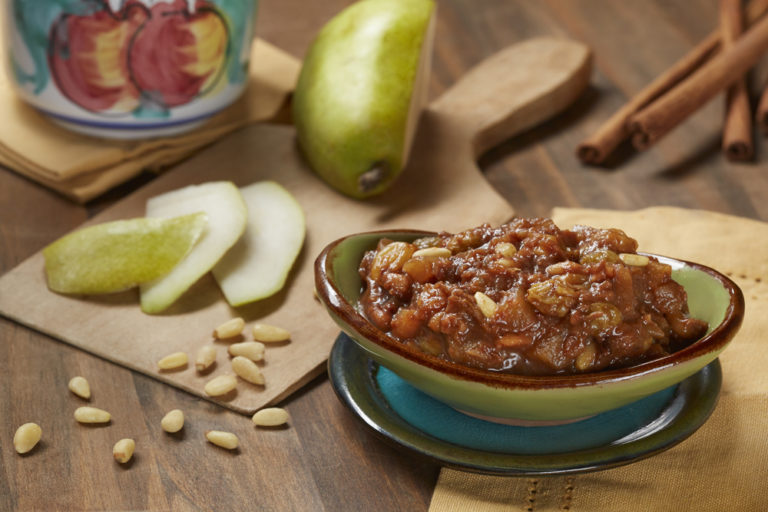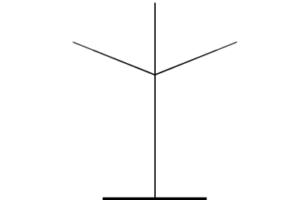Pine nuts, pears and almonds evoke the flavors and textures of Italian sweet and savory food. If a Jewish family, living in the Piedmont, were making a locally based Charoset, they would find all the ingredients here. It’s a beautiful dish, and like many, my family loves Italian cooking.
Explore our other international charoset recipes here!
History:
The history of the Jews in Italy spans more than two thousand years. The Jewish presence in Italy dates to the pre-Christian Roman period. Despite periods of extreme persecutions and expulsions from parts from time to time, the Italian Jewish community has always been resilient and plays an important role in Italian culture. As of 2007, the estimated core Jewish population in Italy numbers around 45,000.
The first documented Jews in Italy were the ambassadors sent to Rome by Judah Maccabee in 161 BCE. When the Jews were expelled from Spain in 1492, many of them found refuge in Italy, where they were given protection by King Ferdinand I of Naples.
The Venetian Ghetto was the area of Venice in which Jews were compelled to live under the Venetian Republic. It is from its name in Italian (“ghetto”), that the English word “ghetto” is derived. In the Venetian language it was named “ghèto”. The Venetian Ghetto (incidentally, the first Ghetto) was instituted in 1516.
Ingredients
- 3 apples, sweet or tart
- 2 pears, peeled and chopped, core discarded
- ¾ cup yellow raisins or sultanas
- 1 cup prunes, pitted and finely chopped
- 1⅓ cups dates, pitted and chopped
- 2 cups sweet red Kosher wine, such as Manischewitz
- ⅓ cup pine nuts
- ⅔ cup almonds, finely chopped
- ½ cup sugar or honey
- 1 tsp cinnamon
- ½ tsp ground ginger
Instructions
- Peel and core the apples and pears and cut them in small pieces.
- Put all the ingredients in a saucepan and cook, stirring occasionally, for about 20-30 minutes, until the fruits are very soft, adding a little water if it becomes too dry.






Leave a Reply